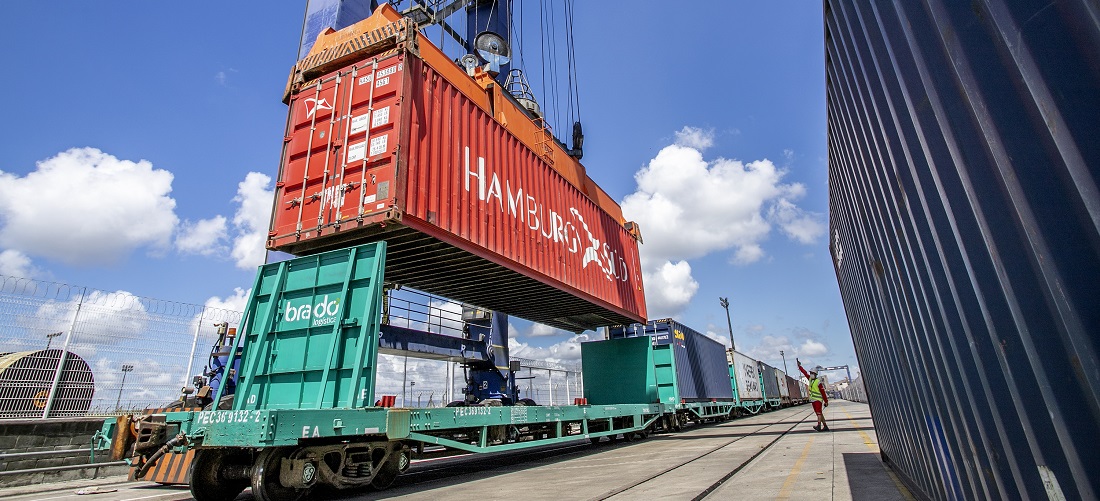
Trains bring 20.2% of all cargo handled in Parana ports
Oct, 26, 2022 Posted by Gabriel MalheirosWeek 202243
The use of trains in transporting cargo into or out of Paraná-based ports rose from 19.6% in 2021 to 20.2% in 2022, almost one percentage point. Considering the first nine months of the year, 9,022,935 tonnes of products either arrived or left the port in train wagons. In the same period last year, 8,752,258 tonnes did.
“It may seem like a small increase, but any increase matters when talking about rail transport, especially if we consider that the infrastructure is still the same, which will soon change with the projects we are implementing,” said the director of operations at the port authority Portos do Paraná.
The volume of cargo transported by road modal registered a slight decline from 77.9% from January to September 2021 to 77.1% this year, despite an increase in the use of the railroads. Trucks transported 34,383,334 tons in 2022 compared to 34,641,812 tons the previous year.
In specific terms, the volume of liquid bulk cargo handled at the Port of Paranagua increased. In the first nine months of 2021, 1,091,957 tonnes (31%) arrived via this route. This year, 1,186,501 tonnes (33.15%). 420,852 tons (11.76%) of the 3,579,189 tons of goods handled this year arrived or left in wagons. The remaining 1,971,836 tons (55.09%) were on highways.
“The use of railways increased significantly in the transport of petroleum and derivatives,” highlights Luiz Teixeira da Silva Júnior, the director of operations. Only 231,582 tons, or 7% of the 3,475,986 tons, were transported in wagons in 2021. 2,152,447 tons, or 62%, were transported by road.
PRODUCTS – Sugar (80.4%), corn (35.39%), soybean (20.86%), soybean meal (20.09%), containers (14.03%), and petroleum derivatives (11.76%) are the products that use the railroad the most to enter or exit the ports of Paraná.
According to the operations director, projects such as the Moegao grain hopper on the east pier that will centralize the unloading of grains arriving by train tend to bring the use of trains to an even higher level.
“The railroad and the solid bulk export segment are the project’s primary focuses. However, the outcomes from what we propose will benefit all other segments, as well as road transportation and the community,” sums up Teixeira by primarily referring to reducing interference from roads and railroads.
It is anticipated that the Moegao will enable the unloading of more than 24 million tons of grains and bran annually due to its capacity to receive up to 180 wagons at once.
-
Other Logistics
Aug, 19, 2021
0
Agribusiness drives road freight volume in Brazil up 67.5% in the 1st semester
-
Meat
Apr, 06, 2022
0
Andrew Lorimer, Datamar’s CEO, discusses cold chain logistical challenges at a trade fair in Germany
-
Economy
Dec, 07, 2023
0
Alckmin celebrates agreement with Singapore: 1st signed by Mercosur in 10 years
-
Shipping
Oct, 13, 2020
0
Brazil and Uruguay to sign agreement to develop binational waterway


